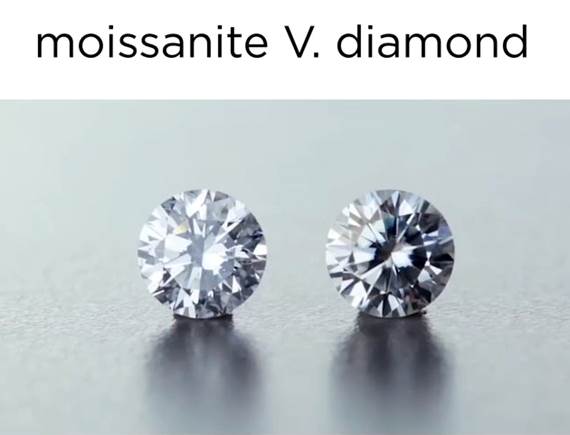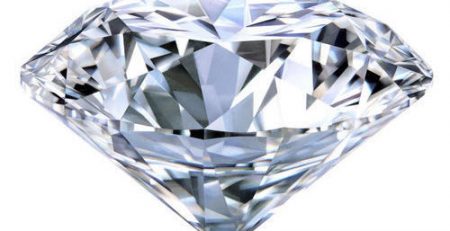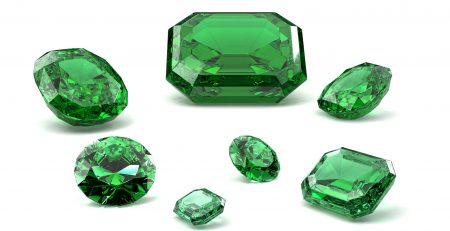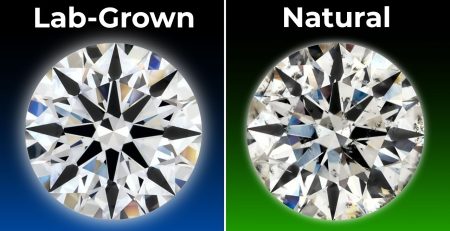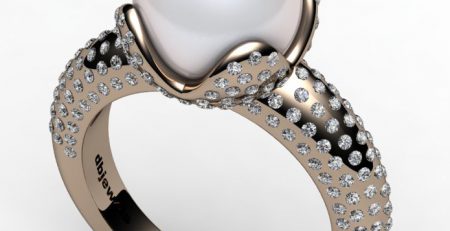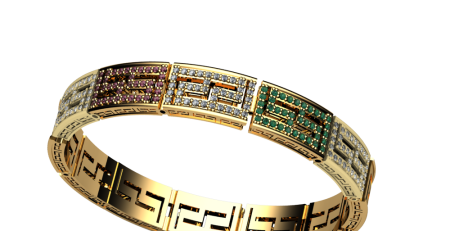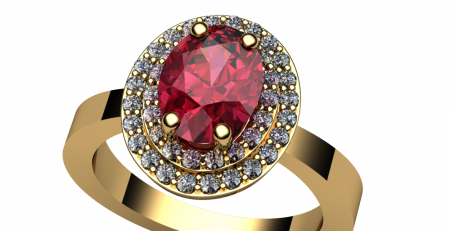What is Moissanite?
Moissanite is a gemstone born from the stars. It was first discovered in 1893 by a French scientist named Henri Moissan, who later won the Nobel Prize in Chemistry. He discovered microscopic particles of the gem that would eventually bear his name in Arizona, in a crater created by a meteorite that fell to Earth. He initially thought that he had discovered diamonds, but later determined that the crystals were composed of silicon carbide.
Natural moissanite is incredibly rare, so moissanite available today is laboratory-created. After many years of trial and error, the particles Moissan discovered were successfully synthesized to produce what is now one of the world’s most scintillating gemstones.
Moissanite is engineered to give the illusion of similarity to diamonds, but is compositionally and visually quite different from a real diamond. The durability, brilliance, and color of the two gems are quite distinct.
Moissanite vs. Diamond
| Moissanite | Diamond | |
| On the Mohs scale, moissanite scores a 9.25, a very good score that makes it one of the hardest substances on earth, and very suitable for everyday wear as an engagement ring. | Diamonds are the hardest known mineral and receive a 10 on the Mohs Scale of Hardness. Because of this exceptional score, diamonds are very durable and ideal for everyday wear. This contributes to their popularity as engagement rings’ center gemstones. | |
| Moissanites exhibit a different kind of brilliance than diamonds do, as their faceting pattern is different. The fiery, rainbow flashes emitted by moissanites are beloved by some, but others feel that moissanite’s heightened brilliance can create a “disco ball” effect, especially in sunlight. The bigger the moissanite, the more likely it is that the difference will be noticeable. Moissanite has a refractive index from 2.65 – 2.69, which is higher than a diamond. | A different type of brilliance is what makes it possible to distinguish a moissanite from a diamond. Diamonds reflect light in three different ways. The white light reflected back is referred to as brilliance, while the rainbow of colors refracted through the diamond is referred to as dispersion. The surface sparkle of a diamond, known as scintillation, is a third type of diamond light return. The combination of these three gives diamonds their famous sparkle. | |
| While moissanites are labeled as “colorless”, the gems can still project a yellow or grayish hue in certain lights. Here again, the larger the moissanite, the more noticeable the color. | A colorless diamond, whether natural or lab created, has a natural body color that contains no traces of yellow, brown, or grey, resulting in a dazzling, bright white appearance. | |
| For the same size from the top view, moissanites are dramatically lower in pricing than diamonds of that size. Moissanite gems typically vary in price only based on size and whether the stone is Premium or Super Premium. | Natural diamonds and lab created diamond prices vary based on shape, carat, cut, color, and clarity. Lab created diamonds are more affordable than natural diamonds. | |
| Because moissanites are lab created, they are an appealing option for those seeking an eco-conscious gemstone as they require no mining. | We go above and beyond the current industry standards to offer both Beyond Conflict Free ™ Diamonds that have been selected for their ethical and environmentally responsible origins, as well as lab created diamonds that are ethically grown with minimal environmental impact. |

